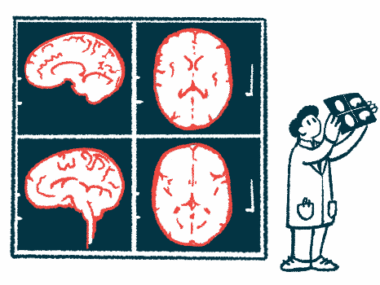Transsphenoidal Surgery May Be Safe for Older Adults, Study Shows
Written by |

Transsphenoidal surgery (TSS), a minimally invasive surgery to remove tumors from the brain’s pituitary gland, was deemed safe and effective to treat Cushing’s disease in a 67-year-old woman, as described in a recent case report.
While TSS is usually avoided in older patients due to a higher risk of death and other complications, researchers argued the woman’s case highlights that “TSS should … be considered as an option to treat Cushing’s disease whenever possible.”
The report, “Correction of Hypercortisolemia with an Improved Cognitive Function and Muscle Mass after Transsphenoidal Surgery in an Older Patient with Cushing’s Disease: A Case Report,” was published in Internal Medicine.
Cushing’s disease is marked by the excessive production of adrenocorticotropic hormone (ACTH) due to a tumor in the pituitary gland. Too much ACTH leads to the adrenal glands, which sit atop the kidneys, producing too much cortisol, leading to the symptoms of Cushing’s.
Removing the pituitary tumor via TSS is considered the first-line treatment for Cushing’s disease. However, the procedure is typically avoided in older patients due to an increased risk of death and other complications.
In this case report, researchers at the Chiba University Graduate School of Medicine, Japan described the case of an older patient with Cushing’s disease whose condition improved after TSS.
The patient had been hospitalized for heart failure at another hospital. Within roughly a month of being hospitalized, she developed a rare type of urinary tract infection, called emphysematous cystitis.
She was transferred to the urology department at Chiba. A CT scan revealed both adrenal glands were abnormally enlarged, and blood tests confirmed ACTH and cortisol levels were elevated.
After being treated for the urinary infection, she was transferred to another hospital department with suspicion of Cushing’s disease. She had high blood pressure for 40 years and diabetes for 27 years. Both conditions ran in the family.
The woman had also suffered a spinal fracture at age 65 and had been heavily medicated for diabetes. She had taken medications to control high blood pressure, osteoporosis, dyslipidemia (excessive levels of fatty molecules circulating in the bloodstream), and heart problems.
A year before being hospitalized, her cognitive function rapidly declined and her diabetes worsened. While a physical examination showed no alarming signs, she had common signs of Cushing’s disease, including a “moon face” and skin thinning. Other symptoms, such as obesity and stretch marks, were absent.
A blood test again showed high ACTH and cortisol levels, as well as elevated dehydroepiandrosterone sulfate (DHEA-S), a hormone produced by the adrenal glands.
Clinicians performed a dexamethasone suppression test (ODST) using both a low- and high-dose of dexamethasone. This test, which is usually performed to confirm high cortisol levels, measures blood cortisol levels in the morning after patients take a dexamethasone tablet, a corticosteroid that normally blocks its production.
In this case, blood cortisol levels failed to drop, but only when using a low dose of dexamethasone.
The patient responded to the corticotropin-releasing hormone (CRH) stimulation test used to detect pituitary tumors. The CRH test is based on the principle that pituitary tumors usually respond to CRH stimulation by increasing ACTH production, while other tumors typically don’t.
The presence of a tumor in the left side of the pituitary gland was later confirmed by an MRI scan and additional tests confirmed the Cushing’s disease diagnosis.
The patient underwent TSS. The tumor was analyzed and confirmed to be an ACTH-producing adenoma. The woman received a daily dose of 30 mg of hydrocortisone after surgery to maintain her cortisol levels within a normal range.
Before surgery, she had been diagnosed with cognitive impairment and sarcopenia, a condition marked by loss of muscle mass.
At a six-month follow-up, the hydrocortisone dose was gradually reduced to 10 mg and the patient no longer showed signs of a “moon face” or skin thinning. Also, no remaining tumor cells were observed on MRI scans, suggesting she had gone into remission.
The patient showed improvements in her cognitive skills, as shown by an increase in the score of the Mini-Mental State Examination (MMSE), which rose from 17 before surgery to 21 after it. The MMSE scoring ranges from zero to 30, with a normal cognitive status corresponding to a 24 or higher.
MRI scans continued to show the same level of brain shrinkage, but further tests revealed an improvement in brain blood flow. Muscle mass in the lower legs increased and the patient no longer needed a wheelchair, as she did before surgery. She was now using a walker. Her exercise tolerance also improved.
“We encountered an older patient with Cushing’s disease who underwent surgical treatment and experienced improvement in the cognitive function and muscle mass after TSS,” the researchers wrote.






